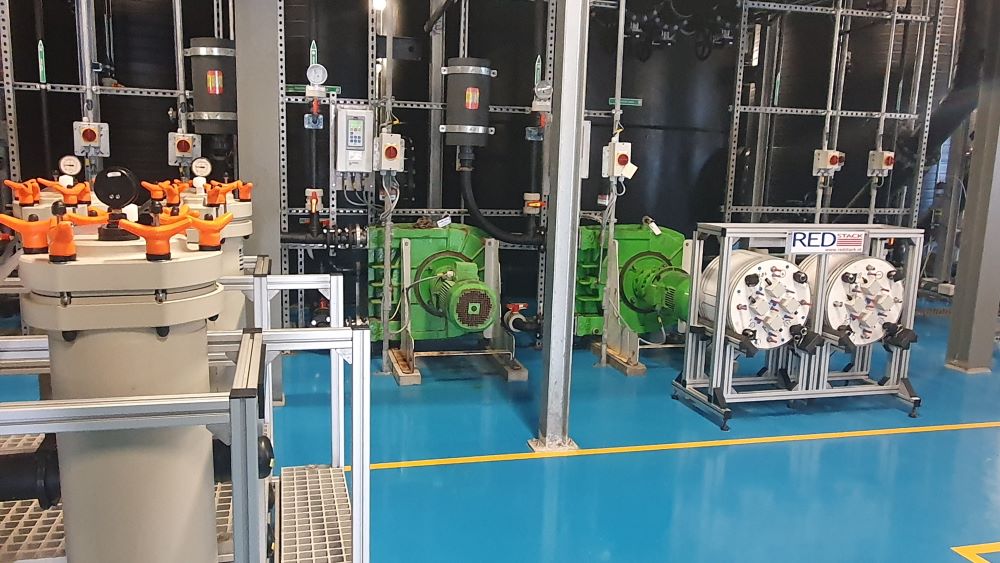The key to this partnership between Sacyr Agua and Dutch company RedStack lies in removing salt from brackish water while generating energy in the process. The two companies will collaborate on various electrodialysis solutions to make this possible.
Electrodialysis reversal (EDR) enables the desalination of brackish water from diverse sources. Its counterpart, reverse electrodialysis (RED), generates energy by exploiting the salinity gradient between brine and freshwater.
Sacyr brings significant experience with EDR technology, having built the world’s largest EDR facility: the Abrera plant in Barcelona, with a capacity of 200,000 m³/day. We also operate other plants, such as Valle Guerra (San Cristóbal de La Laguna, Tenerife), where we desalinate treated wastewater using a membrane bioreactor (MBR) to produce high-quality water for irrigation.
Reverse electrodialysis (RED) generates energy by utilizing the salinity difference between two water streams—typically brine and freshwater. We are especially interested in applying RED to recover energy from the combination of brine from desalination plants and effluent from municipal wastewater treatment facilities.
Sustainable use of brine
Sacyr and RedStack have successfully tested RED technology at a pilot project through the LIFE HyReward project, funded by the European Union. The project has achieved energy recovery rates of up to 0.3 kWh/m³.
In LIFE HyReward, we explored the potential of generating renewable electricity from the brine produced during desalination. The goal was to enhance the energy efficiency of the process by combining reverse osmosis with reverse electrodialysis. Integrating this approach with conventional technologies makes desalination more sustainable by recovering electrical energy from brine before it is discharged into the sea, thereby reducing CO₂ emissions.
As part of their long-term collaboration, Sacyr will deploy REDstack’s EDR and RED systems in projects focused on salt removal and energy generation from brine streams. Additionally, the two partners are currently evaluating the site for a pilot plant that will use RedStack’s next-generation EDR technology, which offers advantages such as greater productivity and lower energy consumption compared to other solutions on the market.
